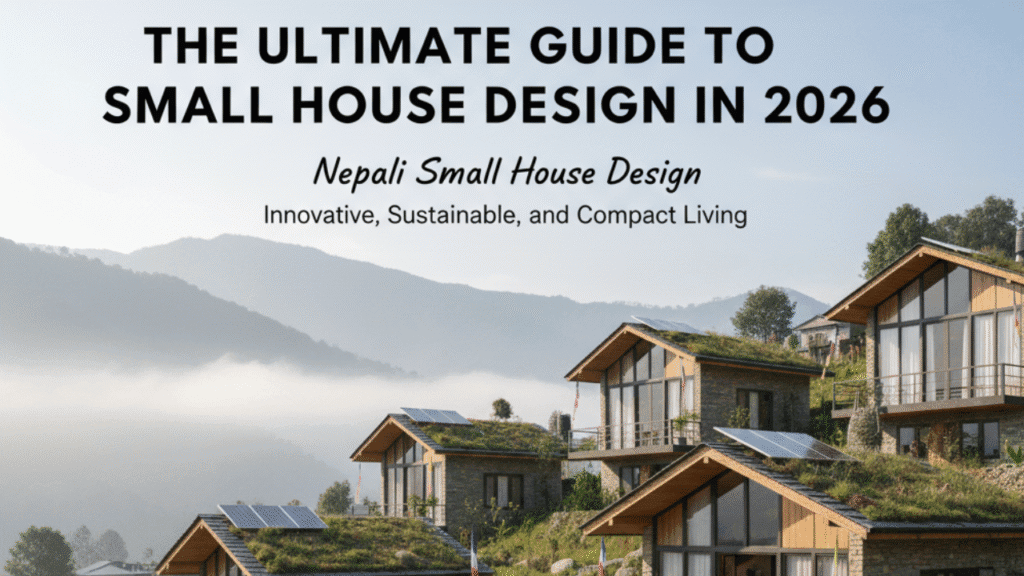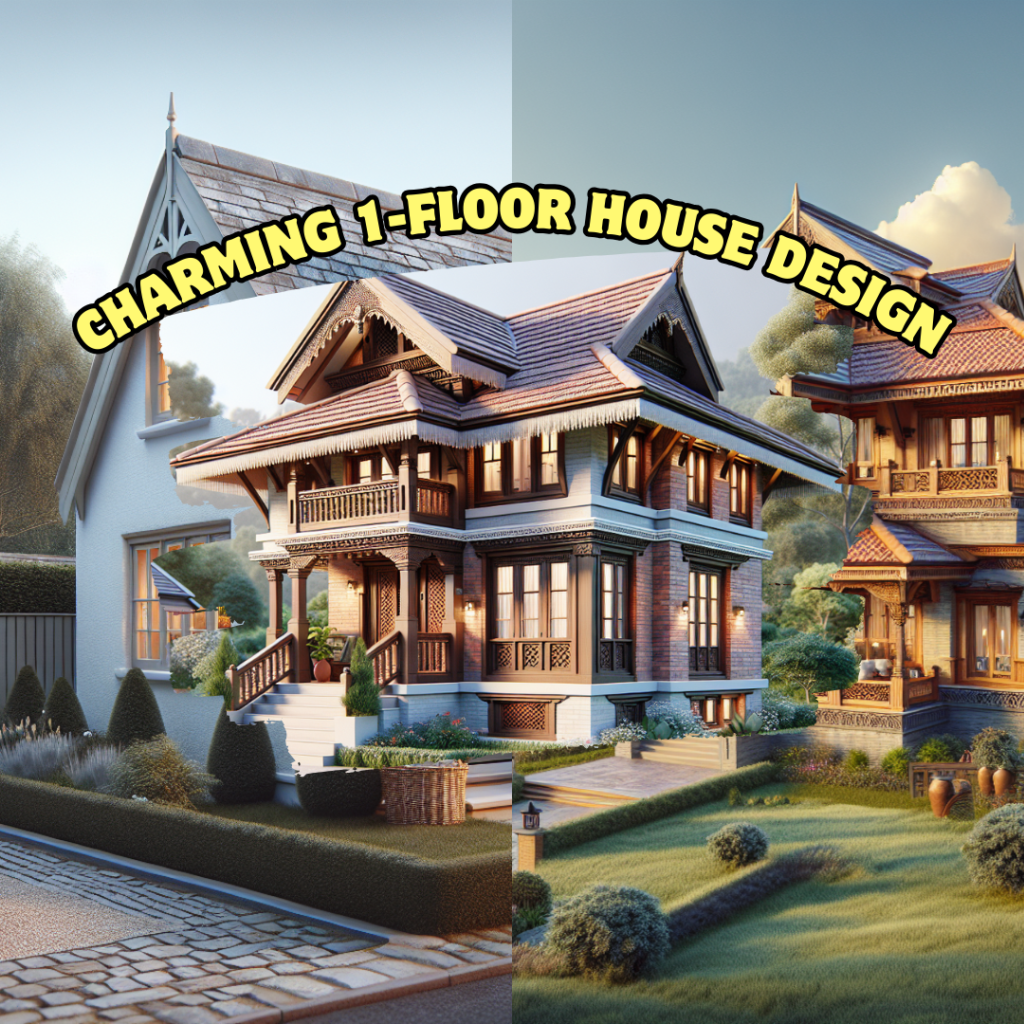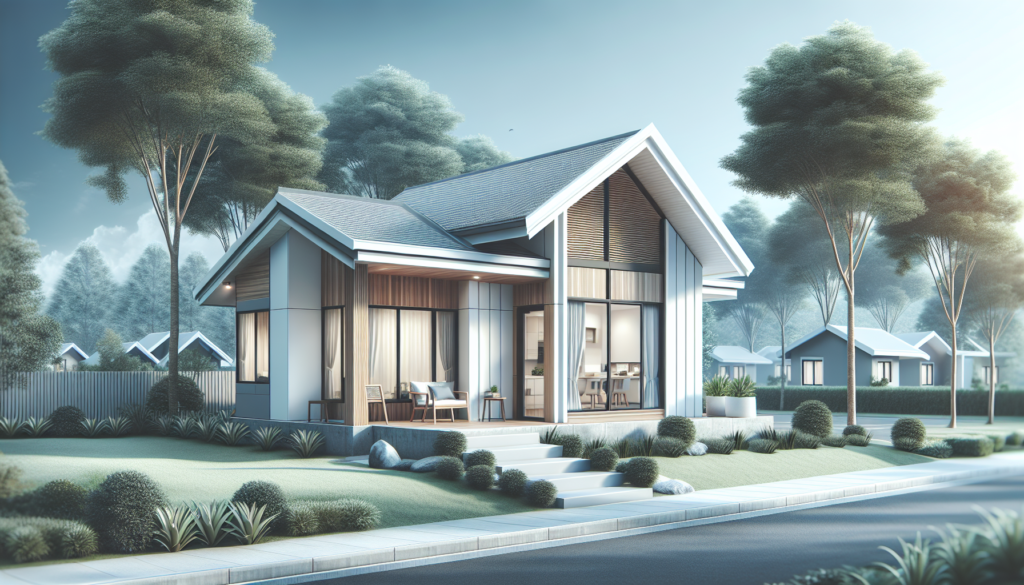In a world where land is increasingly expensive and the call for sustainable living grows louder, the focus has shifted from “bigger is better” to “smarter is better.” Small house design is no longer just a trend; it’s a powerful architectural solution that maximizes efficiency, minimizes cost, and enhances quality of life.
Whether you’re planning a starter home, a retirement oasis, or simply looking to build a compact, modern residence on a challenging urban plot, this guide will walk you through the essential principles, innovative floor plans, and critical budgeting details needed to bring your perfect compact home to life.
Why Choose a Small House in a Competitive Market? (The Small Home Philosophy)
The decision to build a small house design is a strategic one, offering long-term rewards that extend far beyond the construction phase. It’s a choice that reflects a modern philosophy focused on intentionality and efficiency.
The Financial Freedom of Compact Living (Mention small house design cost per square foot)
The most immediate benefit of choosing a smaller footprint is the profound financial impact. A smaller home inherently reduces costs across the board:
- Lower Construction Costs: Fewer materials, less labor, and a simpler foundation mean significant savings upfront.
- Reduced Lifetime Expenses: Lower utility bills, less cleaning, and cheaper maintenance are perpetual benefits.
- Better Land Utilization: In high-density areas, a compact design allows you to build a comfortable home on a lot you might have previously deemed too small or too costly for conventional architecture.
When calculating your budget, focusing on the small house design cost per square foot quickly reveals the efficiency gain. While certain fixed costs (like permits or specialized foundation work) may remain, a smaller structure drastically cuts the per-square-foot price of materials and interior finishes.
Environmental Benefits and Sustainable Small House Design
A commitment to sustainable small house design is a commitment to the planet. Small homes require less energy to heat, cool, and light.
- Resource Efficiency: Smaller houses demand fewer natural resources (lumber, concrete, etc.) during construction.
- Lower Energy Footprint: Their smaller volume makes them easier to insulate and maintain at a comfortable temperature, allowing for simpler, more efficient systems. This focus on sustainability often aligns with the use of local, eco-friendly building materials.
Small Home Design Ideas for Maximizing Lifestyle Over Square Footage
The misconception is that a small home requires sacrifice. In reality, it forces a focus on quality over quantity. Every square foot is optimized, often leading to better-designed, more functional spaces than large, poorly planned houses. The design process becomes about making clever architectural choices, such as using hidden storage, multi-functional furniture, and dramatic natural lighting to enhance the feeling of space.
- To explore how smart design choices can transform a compact space, see our homepage for detailed projects and architectural philosophies.
Mastering the Layout: Essential Small House Floor Plan Strategies
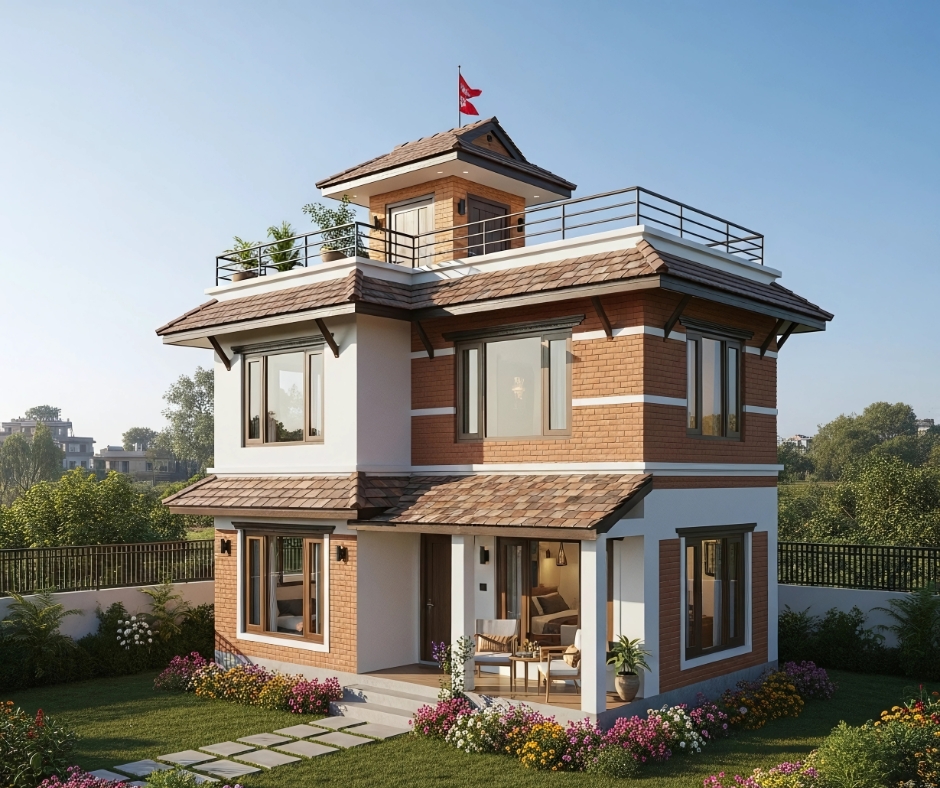
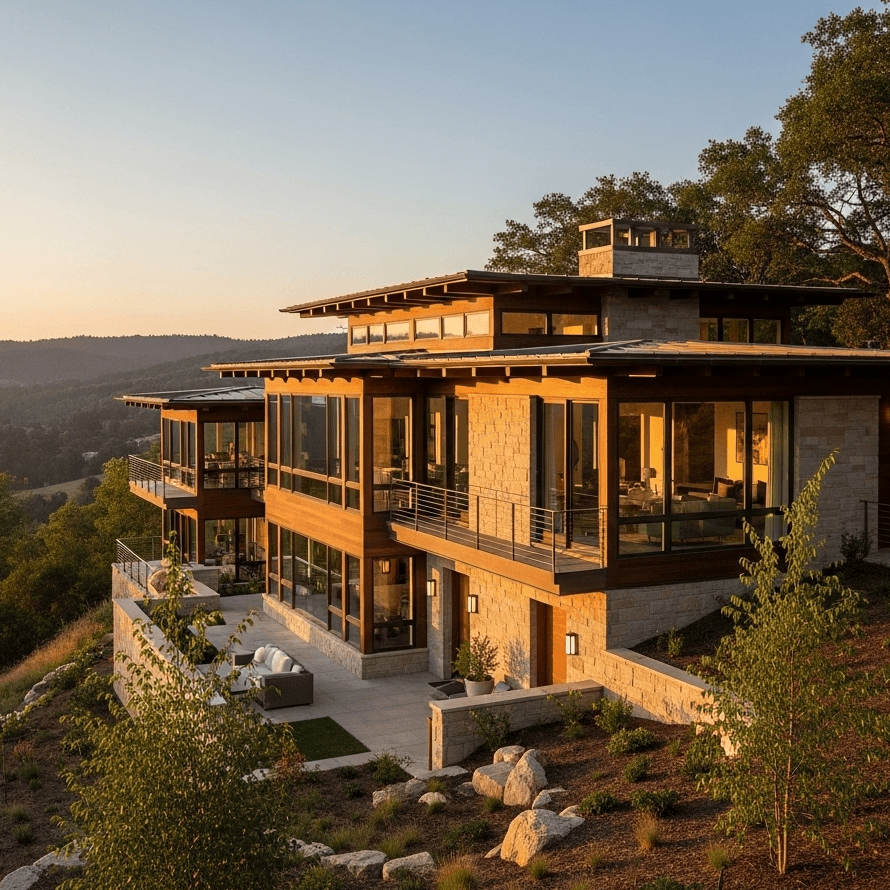
The secret to successful small house design lies in the floor plan. A brilliant layout can make a 1,000 sq. ft. home feel like 1,500 sq. ft. These strategies focus on fluidity, versatility, and vertical space utilization.
Open Concept vs. Zoned Living: Which is right for you? (small house design with open floor plan)
The popular small house design with open floor plan strategy connects the kitchen, dining, and living areas into a single cohesive volume. This eliminates wall barriers, allowing light to travel freely and creating an expansive, airy feel.
- Pros: Maximizes perceived space, ideal for entertaining, and promotes family togetherness.
- Cons: Lack of privacy, noise travels easily, and requires consistent tidiness.
Alternatively, zoned living uses subtle architectural elements—like changes in floor elevation, half-walls, or floor-to-ceiling shelving—to define separate functional areas without fully closing them off. This offers the best of both worlds: defined function with an open feel.
The Power of Vertical Space: Designing with Lofts and Double-Height Ceilings (modern small house design with loft)
In a compact footprint, the ceiling is your most underrated asset. Incorporating a modern small house design with loft allows you to leverage verticality for maximum impact.
- Lofts: Ideal for a secondary bedroom, a reading nook, or storage, a loft effectively adds functional square footage without increasing the foundation size.
- Vaulted or Double-Height Ceilings: Even without a loft, a high ceiling in the main living area draws the eye upward, dissolving the perception of confinement and providing an undeniable sense of luxury.
- For cutting-edge examples of lofts and dramatic ceiling treatments in global compact architecture, review these inspirational projects from ArchDaily or Dezeen.
Designing for Family: Efficient Small House Design with Two Bedrooms
Building a small house design with two bedrooms is entirely achievable without compromise. The key is to make the bedrooms functional sleeping and dressing areas, while pushing other functions—like office work, reading, or play—into shared, multi-purpose spaces.
- Space-Saving Solutions: Utilize pocket doors (which disappear into the wall) instead of swing doors to save precious floor space. Opt for built-in wardrobes that integrate flush with the wall to avoid bulky furniture.
- Optimized Dimensions: Ensure walls and corridors are engineered to precise dimensions that allow for standard mattress and furniture sizes with minimal wasted space.
Small House Design with Dual Purpose Rooms: From Dining Nook to Home Office
The concept of the dedicated, single-use room is a luxury that small homes shed. Every space must be ready to transform:
- The Kitchen Island: Doubles as a prep area, a dining table, and a children’s homework station.
- Built-in Cabinetry: A deep cabinet in the living room can house a fold-down Murphy bed or a retractable desk, turning a daytime living room into a private guest room or a home office after hours.
- Hidden Storage: Incorporate storage beneath stairs, under beds, and even under built-in benches to keep clutter at bay—a crucial component for maintaining the airy feel of a compact home.
Solving Structural Challenges: Small House Design for Narrow Lots
In dense urban environments, the reality is often a long, thin plot of land. This challenge is where good architecture shines, turning constraints into unique features, especially when executing a small house design for narrow lot.
Long and Lean: Optimizing Depth Over Width
A narrow lot requires a vertical stacking strategy. Focus on creating deep floor plates and using the full length of the plot.
- Central Courtyards/Light Wells: Since side windows may be limited by neighboring structures, a central void or light well becomes essential. This draws light and air deep into the core of the home, transforming a potentially dark center into a bright, architectural feature.
- Staircase Placement: Position the staircase along one of the narrow walls to minimize disruption to the main living areas. The space beneath the stairs can then be reclaimed for storage or a compact powder room.
Light and Airflow: Strategies for Windows and Vents on Boundary Walls
When building regulations restrict side openings, light must come from the ends and the top:
- Clerestory Windows: These high, horizontal windows are placed near the ceiling line and can capture light and allow for ventilation while maintaining privacy from adjacent properties.
- Skylights: Used strategically in hallways, stairwells, and above key functional areas (like the kitchen), skylights flood the core of the home with natural light.
Utilizing Basement and Roof Space (small house design with basement / terrace)
When horizontal expansion is impossible, utilize the ground below and the space above.
- Basements: Building a small house design with basement significantly increases functional space for storage, utilities, or even a dedicated entertainment area, effectively increasing your usable square footage without enlarging the footprint.
- Terrace/Roof Gardens: The roof can be transformed into a vital outdoor living area—a terrace for relaxation, a place to dry laundry, or a kitchen garden.Always consult local Government or municipal building codes before planning basement excavation or structural changes on narrow or boundary lots.
Regional Focus: Small House Design Tailored for the Climate and Terrain
Design must respond to its environment. Given the high-density and varied topography of the Himalayan region, small house design in Nepal requires specific local knowledge.
Key Considerations for Small House Design in Tropical Climate
While Nepal has varied climate zones, designing for areas with high heat and humidity means prioritizing passive cooling:
- Cross-Ventilation: Ensure windows and openings are positioned on opposite walls to create a direct path for breezes to travel through the house, minimizing the need for air conditioning.
- Deep Eaves and Verandas: These traditional features shade the walls and windows from harsh sun exposure, keeping the interior cool.
- Material Selection: Use locally sourced, thermally massive materials (like brick or stone) that absorb heat during the day and release it slowly at night, stabilizing the indoor temperature.This is essential for a successful small house design in tropical climate.
Small House Design with Balcony and Outdoor Living Spaces
In high-density urban areas, the small house design with balcony becomes the primary connection to the outdoors.
- Vertical Greenery: Integrate small vertical gardens on balconies to improve air quality and provide a visual break.
- Multi-use Balconies: A small balcony can serve as a drying rack, a coffee nook, or a quiet retreat. Ensure the design includes retractable shading solutions.See how we integrate functional, beautiful outdoor spaces in our local portfolio projects here.
Small House Design for Mountain Terrain (Addressing foundation and slope challenges)
Building on a slope requires specialized architectural and engineering solutions:
- Stepped Foundations: The house must be built in terraces that follow the natural contour of the land, minimizing excavation and soil disturbance.
- Pillar Support: Using reinforced concrete pillars to support sections of the house allows for parking or storage underneath while providing stability against landslides.The correct choice of materials is critical for seismic safety and climate performance. Learn more about regional building materials in our resource section.
The Aesthetics of Small: Modern and Minimalist Styles
A small home should never feel cramped. Modern design principles are perfectly suited to compact living, prioritizing light, texture, and openness.
Modern Small House Design Principles: Clean Lines and Uncluttered Spaces
Modern small house design relies on simplicity. Clean, straight lines and a muted colour palette (whites, greys, wood tones) create a calm and cohesive environment. The key is the strategic use of texture—like polished concrete floors, raw wood accents, or exposed brick—to add depth without adding visual clutter.
Maximizing Natural Light (small house design with large windows)
Light is the ultimate space expander.
- Large Windows: While counter-intuitive in a small space, a small house design with large windows that frame specific views (like the sky or a garden) tricks the eye into perceiving the space beyond the glass as part of the room.
- Strategic Mirrors: Use floor-to-ceiling mirrors in key areas to reflect light and views, effectively doubling the perception of space.
Interior Design Tricks to Make Small Spaces Feel Huge
Interior choices seal the deal for a small house:
- Continuous Flooring: Use the same flooring material throughout the main living areas to create an unbroken visual flow.
- Vertical Storage: Go high with shelving and cabinetry to draw the eye up.For the best ideas on making your interiors look expansive, check out the specialized insights from local experts at interiordesignernp.com.Need help visualizing your space-saving solutions before you build? Our 3D visualization services can bring your compact floor plan to life.
Budgeting and Planning Your Project
The goal of a small house is to minimize cost, but careful planning is essential to prevent budget creep.
Understanding the True Small House Design Cost Per Square Foot
While the overall cost is lower, the small house design cost per square foot can sometimes be higher than a large home due to fixed costs (plumbing, electrical hookups, foundation) and the necessary investment in specialized, high-quality, multi-functional elements (like custom joinery or high-efficiency windows).
- Cost Drivers: Focus on where you spend your money. Invest in the core structure and insulation first, then in multi-use custom cabinetry. Save money on basic finishes and non-structural walls.Keep abreast of land prices and material costs in your area by consulting reputable sources on local real estate and construction news.
The Role of the Architect in a Small Project
For a small house, the architect’s value is multiplied. They are not just drawing plans; they are solving a complex spatial puzzle.
- Efficiency Expert: An architect ensures every inch is accounted for, preventing the feeling of confinement.
- Code Compliance: They navigate the complex local regulations for narrow lots and high-density zones.Our team specializes in highly efficient, compact designs. Learn more about our architectural services here.
Future-Proofing: How to Plan for Expansion Later
Even if you’re building a compact home now, plan for potential future needs (e.g., adding a third bedroom or expanding the family).
- Design the foundation and roof structure to easily support an additional floor.
- Locate plumbing and electrical lines in a way that allows for easy extension to a future addition.
Ready to Design Your Perfect Compact Home? (Conclusion)
Choosing a small house design is choosing a simpler, more intentional, and financially prudent life. By mastering the open floor plan, leveraging vertical space with a modern small house design with loft, and planning carefully for construction costs and local terrain, you can create a home that is both beautiful and functional.
Don’t let a small lot or a tight budget limit your vision. With smart architecture, your compact home can be the most efficient, comfortable, and sustainable place you’ll ever live.
- Embrace the principles of sustainable design, which are at the heart of compact architecture, by reviewing recent studies on sustainable building practices in South Asia.
Contact us today to start turning your vision for a highly efficient, modern small house into a reality.

